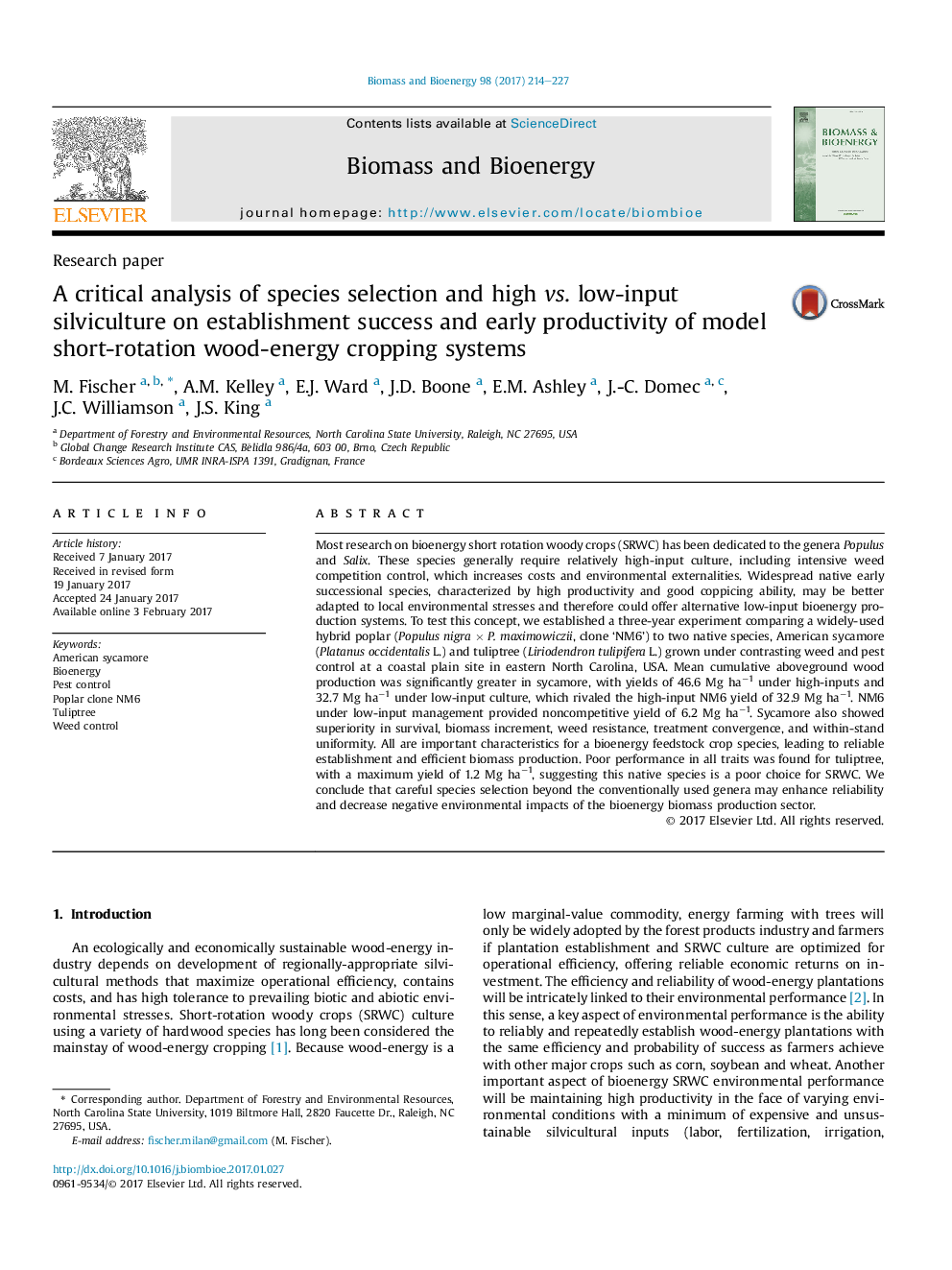| کد مقاله | کد نشریه | سال انتشار | مقاله انگلیسی | نسخه تمام متن |
|---|---|---|---|---|
| 4996317 | 1459795 | 2017 | 14 صفحه PDF | دانلود رایگان |
عنوان انگلیسی مقاله ISI
A critical analysis of species selection and high vs. low-input silviculture on establishment success and early productivity of model short-rotation wood-energy cropping systems
ترجمه فارسی عنوان
تجزیه و تحلیل بحرانی انتخاب گونه و درختکاری کم در مقایسه با مزرعه کم در ورودی در موفقیت استقرار و بهره وری زود هنگام مدل سیستم های برداشت چوب
دانلود مقاله + سفارش ترجمه
دانلود مقاله ISI انگلیسی
رایگان برای ایرانیان
موضوعات مرتبط
مهندسی و علوم پایه
مهندسی شیمی
تکنولوژی و شیمی فرآیندی
چکیده انگلیسی
Most research on bioenergy short rotation woody crops (SRWC) has been dedicated to the genera Populus and Salix. These species generally require relatively high-input culture, including intensive weed competition control, which increases costs and environmental externalities. Widespread native early successional species, characterized by high productivity and good coppicing ability, may be better adapted to local environmental stresses and therefore could offer alternative low-input bioenergy production systems. To test this concept, we established a three-year experiment comparing a widely-used hybrid poplar (Populus nigra Ã P. maximowiczii, clone 'NM6') to two native species, American sycamore (Platanus occidentalis L.) and tuliptree (Liriodendron tulipifera L.) grown under contrasting weed and pest control at a coastal plain site in eastern North Carolina, USA. Mean cumulative aboveground wood production was significantly greater in sycamore, with yields of 46.6 Mg haâ1 under high-inputs and 32.7 Mg haâ1 under low-input culture, which rivaled the high-input NM6 yield of 32.9 Mg haâ1. NM6 under low-input management provided noncompetitive yield of 6.2 Mg haâ1. Sycamore also showed superiority in survival, biomass increment, weed resistance, treatment convergence, and within-stand uniformity. All are important characteristics for a bioenergy feedstock crop species, leading to reliable establishment and efficient biomass production. Poor performance in all traits was found for tuliptree, with a maximum yield of 1.2 Mg haâ1, suggesting this native species is a poor choice for SRWC. We conclude that careful species selection beyond the conventionally used genera may enhance reliability and decrease negative environmental impacts of the bioenergy biomass production sector.
ناشر
Database: Elsevier - ScienceDirect (ساینس دایرکت)
Journal: Biomass and Bioenergy - Volume 98, March 2017, Pages 214-227
Journal: Biomass and Bioenergy - Volume 98, March 2017, Pages 214-227
نویسندگان
M. Fischer, A.M. Kelley, E.J. Ward, J.D. Boone, E.M. Ashley, J.-C. Domec, J.C. Williamson, J.S. King,
